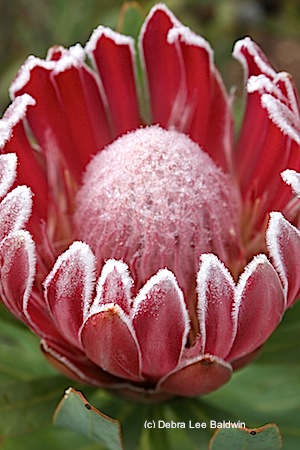
The Proteaceae family was named after the mythical god Proteus, son of Poseidon, because the flowers have so many forms. Proteus could foretell the future, but changed his shape so he didn’t have to.
Doesn’t the king protea above look like a snow cone?
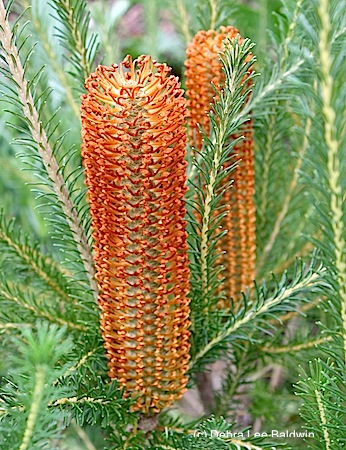
And this banksia, a corn cob? The petals feel like coated plastic wire, the kind used in telephone cables.
Proteas (plants in the genera Protea, Banksia and Leucospermum) are from Australia and South Africa. Although grown commercially in my area (Southern CA) I’ve not been able to keep one going in my garden. The plants need superb drainage, acid soil, good air circulation—but protection from dry winds—and don’t like to have their roots disturbed. They prefer to grow on slopes. If given fertilizer that contains phosphorus, they will glut themselves and die.
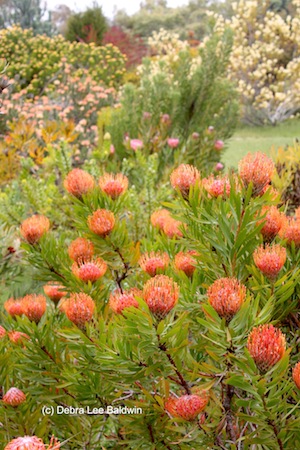
During a recent visit with me to the UC Santa Cruz Arboretum south of San Francisco, my non-gardening husband was wowed by proteas and observed that they look like they came from another planet. Not surprisingly, proteas were used to suggest exactly that in the old Star Trek TV series.
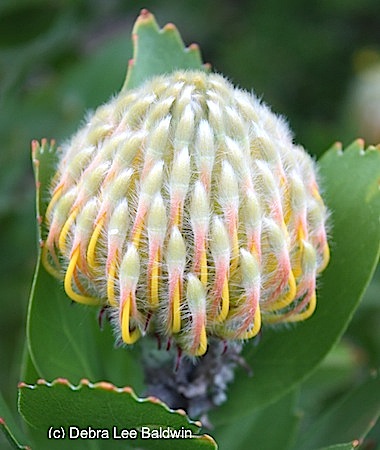
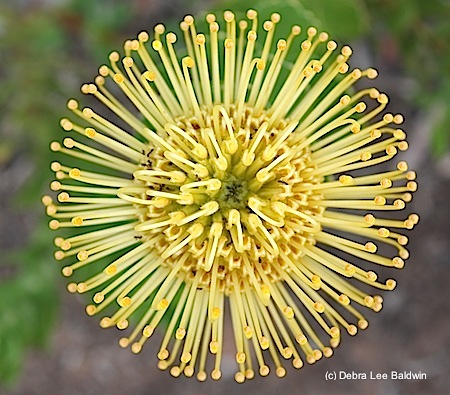


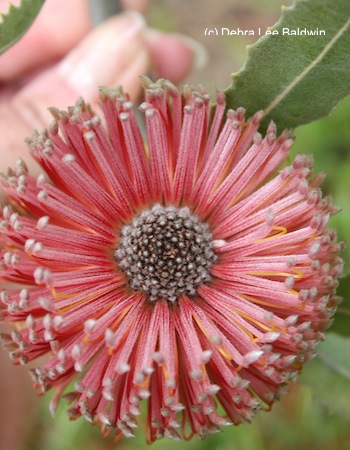
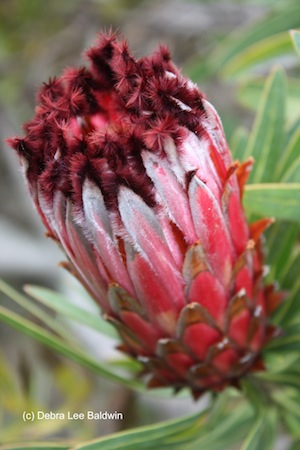

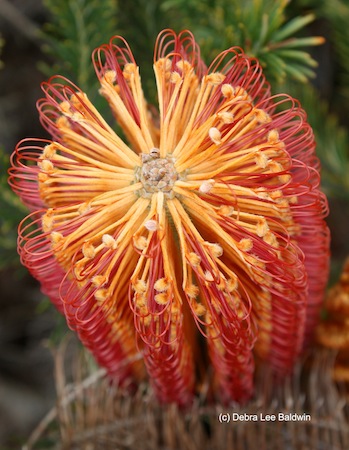

Proteas are the ultimate cut flowers—long lasting and also intriguing dried—but ants love the nectar. When friends give me protea blooms from their gardens, I am of course thrilled, but I also know to hose them down (the flowers, not the friends) before bringing them into the house.
